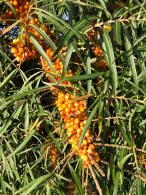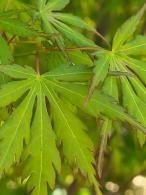Get Additional 5% Off 1st Order
Ulmus Lobel - Lobel Elm
1. Add items to basket
2. Go to the basket
3. Enter your postcode in Delivery Price Check
Plant shape: Full standard
Trunk height: 1.8-1.9 m
Trunk girth: 8-10 cm
Pot size: 40 Litres
Plant ID: 3889 100
click to view this plant size >Plant shape: Full standard
Trunk height: 1.9-2 m
Trunk girth: 18-20 cm
Rootball - supplied without a pot
Plant ID: 3891 100
To check delivery cost add your plants to basket, then you can type your postcode in our Quick Delivery Price Check.
Ulmus Lobel Elm Tree
Ulmus lobel, commonly called the Lobel Elm tree is a variety of deciduous elm tree. This is a Dutch hybrid cultivar. It was cloned in 1962 and released for sale in 1973. Unlike the original elm, this Ulmus Hybrid Lobel cultivar is not readily susceptible to Dutch Elm disease. In the Netherlands, the Ulmus lobel scored a very good 4 out of 5 rating for its resistance to the decimating tree fungal pathogen.
The Lobel Elm is ideal for seaside planting because it is extremely resistant to wind and salt spray. In many regions of the world with large coastlines, such as the Netherlands, the Ulmus Lobel has been planted in coastal areas to replace trees that were lost during extensive storms such as the Great Storm of 1987.
The Ulmus lobel has a vigorous upright growth habit. Within ten years it typically stands 15 meters high with a 6-meter canopy width. Ultimately, the tree will reach over 20 meters with a spread of up to 10 meters. It produces a visually pleasing broad pyramidal canopy. These trees are shaped as multi-stem specimens.
During the spring months, the tree’s new growth appears in a bronze hue that matures to a dark green. The leaves are glossy and coarsely-toothed. The Lobel Elm creates flowers in dense bunches that are barely noticeable amid the tree’s foliage. The flowers are light green and typically appear from March to April. Following flowering, the tree produces winged nuts that are flat and round. In the autumn, the foliage turns a brilliant yellow before falling from the tree. During the winter months, Lobel Elm bark is especially eye-catching. Young trees have a smooth and silver-grey appearance. Upon maturity, the bark turns a blackish grey and has deep grooves.
Plant the Lobel Elm tree in a location with well-draining soil. Unlike other trees, it will tolerate calcareous soils. Once established it can withstand periods of brief drought or flooding. The Ulmus lobel prefers a planting site in full sun but will tolerate partial shade. When planting more than one Ulmus lobel hybrid, great care should be taken to make sure that the trees are spaced far enough apart so that the roots do not grow together and touch.
This hardy resistant Elm makes an excellent street tree because of its urban pollutant tolerance. It also makes a wonderful landscape or shade tree.













